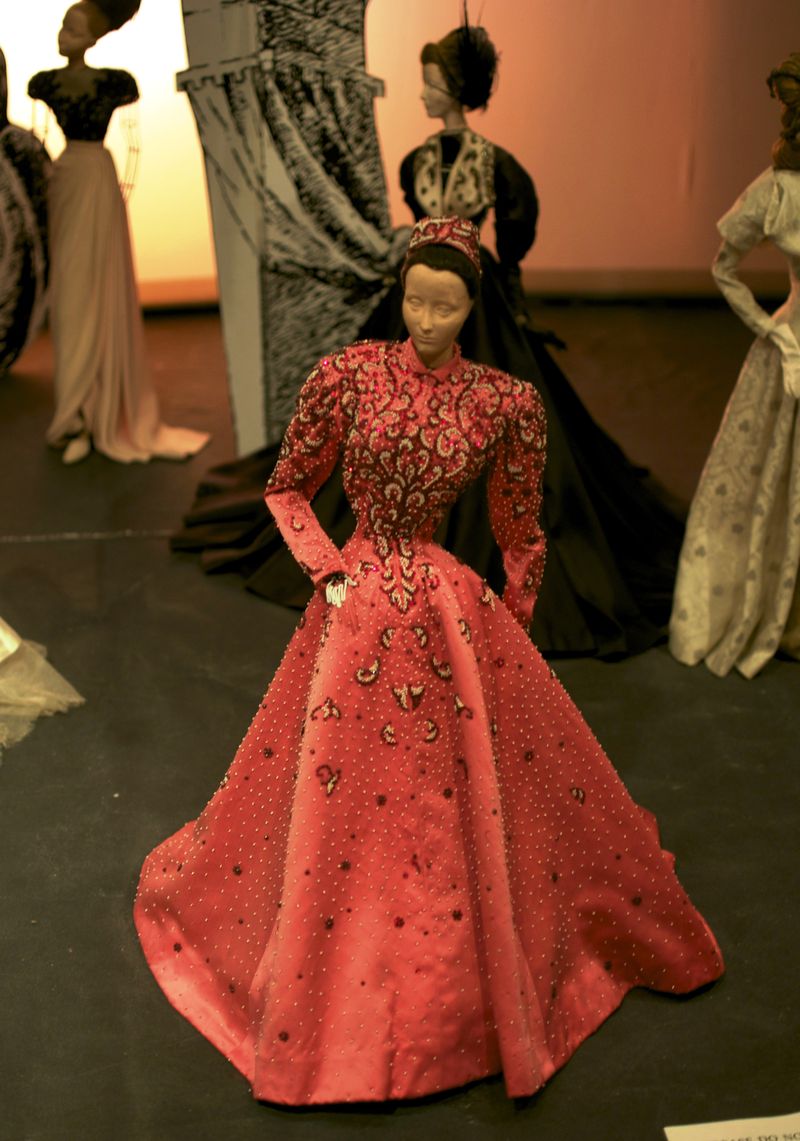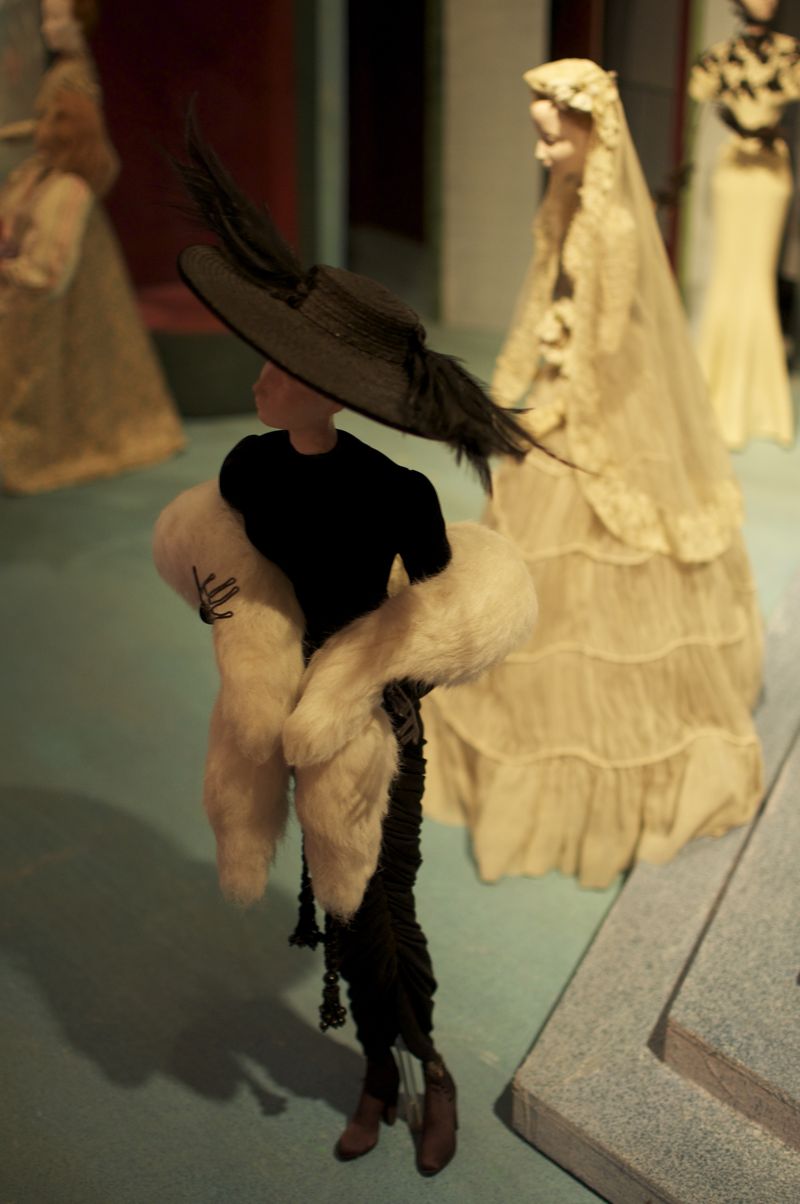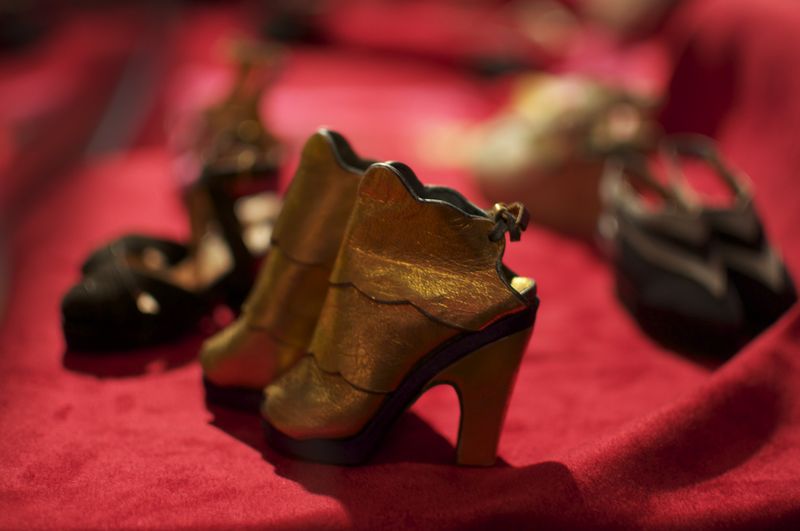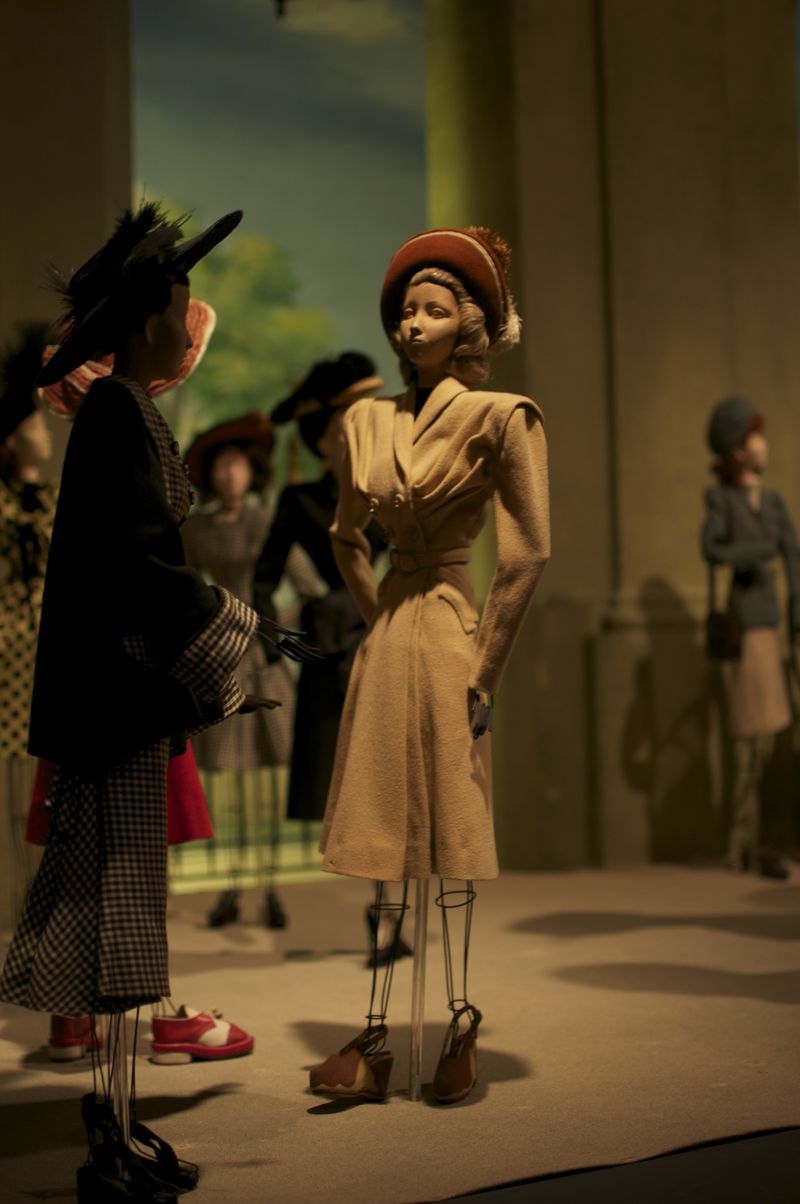Though our blog posts usually focus solely on FIDM Museum projects, today’s post explores another museum's collection. I recently visited the Maryhill Museum of Art, home of the legendary Théâtre de la Mode. Because of Maryhill’s location in rural Washington State, not many fashion enthusiasts have the opportunity to see this unusual collection. Experiencing the Théâtre de la Mode in-person was a fascinating experience, one worth sharing with all of our readers.
**********
Perched on a bluff overlooking the Columbia River, the Maryhill Museum of Art is a long, long way from the haute couture ateliers of Paris. Located on the southern border of Washington State, Maryhill is also a long way (100 miles) from the nearest international airport in Portland, Oregon. Despite its distance from Paris, Maryhill owns a one-of-a-kind collection of Parisian haute couture, the Théâtre de la Mode. Consisting of 2 foot tall wire dolls dressed in haute couture from head-to-toe, this collection offers a unique snapshot of late World War II Parisian fashion.
 Visitors to the Maryhill will see 41 of the original dolls on display, staged in three different backdrops. Balenciaga's pearl and bead embroidered evening gown, with matching hat, is front and center when you enter the exhibition. The backdrop is Le Jardin Merveilleux (The Marvelous Garden) by set designer Jean-Denis Malclès. The original backdrop was lost, but Malclès participated in a 1989 recreation of the original set.
Visitors to the Maryhill will see 41 of the original dolls on display, staged in three different backdrops. Balenciaga's pearl and bead embroidered evening gown, with matching hat, is front and center when you enter the exhibition. The backdrop is Le Jardin Merveilleux (The Marvelous Garden) by set designer Jean-Denis Malclès. The original backdrop was lost, but Malclès participated in a 1989 recreation of the original set.
The Théâtre de la Mode was conceived in 1944-45, during the aftermath of Paris’s liberation from German occupation. From June 1940 through June 1944, Paris was occupied by the German Army. During the occupation, Paris was isolated from contact with the United States and Britain. Haute couture production slowed dramatically, and any garments produced were for domestic consumption only. In the wake of occupation, it was important to reinvigorate the haute couture industry, for France's self-image and the economy. The creation of the Théâtre de la Mode was an announcement: Paris haute couture is back in business. Through ticket sales, the exhibition of the Théâtre de la Mode also provided funds for war relief.
 This Pierre Balmain ensemble is a recreation of the original 1946 outfit, which was lost or destroyed during the journeys of the Théâtre de la Mode. The black straw hat with egret feathers is an original Legroux. A chiffon wedding gown by Paquin is seen in the background. The backdrop is a 1989 recreation of La Grotto Enchantée by set designer André Beaurepaire
This Pierre Balmain ensemble is a recreation of the original 1946 outfit, which was lost or destroyed during the journeys of the Théâtre de la Mode. The black straw hat with egret feathers is an original Legroux. A chiffon wedding gown by Paquin is seen in the background. The backdrop is a 1989 recreation of La Grotto Enchantée by set designer André Beaurepaire
The creation of the Théâtre de la Mode was a joint project between the Chambre Syndicale la Haute Couture and L’Entraide Francaise, a war relief organization. Prominent Parisian couturiers, milliners, shoemakers, jewelers, hairdressers, and artists were recruited to create the dolls, and design fanciful backdrops. Everyone involved in the project donated their time and the materials used to create the more than 200 dolls and 15 backdrops of the Théâtre de la Mode.
 Metallic leather shoes by an unidentified maker. For scale, the shoes are about 2 inches tall.
Metallic leather shoes by an unidentified maker. For scale, the shoes are about 2 inches tall.
The Théâtre de la Mode was first displayed in March 1945 at the Museum of Decorative Arts in Paris. After their Paris debut, the dolls of the Théâtre de la Mode began a world tour, including stops in Barcelona, London, Vienna, Stockholm, and Copenhagen. In 1946, the world travelers arrived in New York to great fanfare. After two months in New York, the Théâtre de la Mode traveled to San Francisco for an exhibit at the de Young Museum.
 Black and white ensemble by Jean Desses and a tan wool day dress by Agnes Drecoll.
Black and white ensemble by Jean Desses and a tan wool day dress by Agnes Drecoll.
After the de Young exhibit, the dolls were stored at San Francisco’s City of Paris department store. This was the home of the Théâtre de la Mode until 1952, when a strange twist of fate brought them to the Maryhill Museum of Art. By 1952, the dolls were no longer needed to promote haute couture; Christian Dior’s New Look had brought all eyes back to Paris fashion and the industry was revived. Rather than destroying the dolls, San Francisco socialite and museum patron Alma Spreckels brokered a deal wherein the Théâtre de la Mode were donated to the Maryhill Museum of Art, a museum founded by her friend Sam Hill.
 L to R: Striped dinner dress by Agnes Drecoll, evening coat by O'Rossen, Hermès at-home gown (seated). Like O'Rossen, many of the couturiers who participated in the Théâtre de la Mode are now largely forgotten.
L to R: Striped dinner dress by Agnes Drecoll, evening coat by O'Rossen, Hermès at-home gown (seated). Like O'Rossen, many of the couturiers who participated in the Théâtre de la Mode are now largely forgotten.
The dolls remained at Maryhill until the late 1980s, when they were sent back to Paris for restoration and a 1990 exhibition. Since their re-discovery, the dolls of the Théâtre de la Mode are sometimes seen in exhibitions, but they reside primarily at the Maryhill Museum of Art. If you're ever in the area, Maryhill is definitely worth a visit. In addition to the Théâtre de la Mode, the museum owns an eclectic collection of objects, including objects associated with Queen Marie of Romania (1875-1938), Rodin sculptures, Native American artifacts and a collection of chess sets. And, as you can see from this last photo, Maryhill's rural setting is gorgeous.



If this isn’t one of the most unexpected and fascinating collections I’ve seen, I don’t know what is!
I’ve had the pleasure of visiting the maryhill museum. It really is an unexpected gem in the middle of no where, right?!
It really is! Definitely worth the trip if you’re ever in this NW corner of the United States.
There is a sister collection to these fashion dolls at the Brooklyn Museum. They were part of the ‘Merci Train’ exhibits that toured the country after the war. Unfortunately, I don’t think they have been displayed for some time and are sitting in storage waiting to be restored. It’s so wonderful to see the ones displayed at Maryhill. I hope some day the ‘Merci Train’ dolls can be displayed again. Such a great part of history!
Oops, they may be at the Metropolitan Museum of Art. I think they were transferred there more recently.
Yes! The Merci Train or Gratitude Train dolls are currently at the Metropolitan Museum of Art. Though they aren’t on display, there are great photos online: http://www.metmuseum.org/collections/search-the-collections?ft=gratitude+train.
The Met catalog records also include a brief history of the dolls, and their connection to the Theatre de la Mode. The Merci Train dolls date from 1949, and are constructed like the Theatre dolls. Instead of portraying contemporary 1947 fashions, they describe the evolution of French fashion history. Fascinating!
Wouldn’t it be great to see both collections on exhibit together?!?